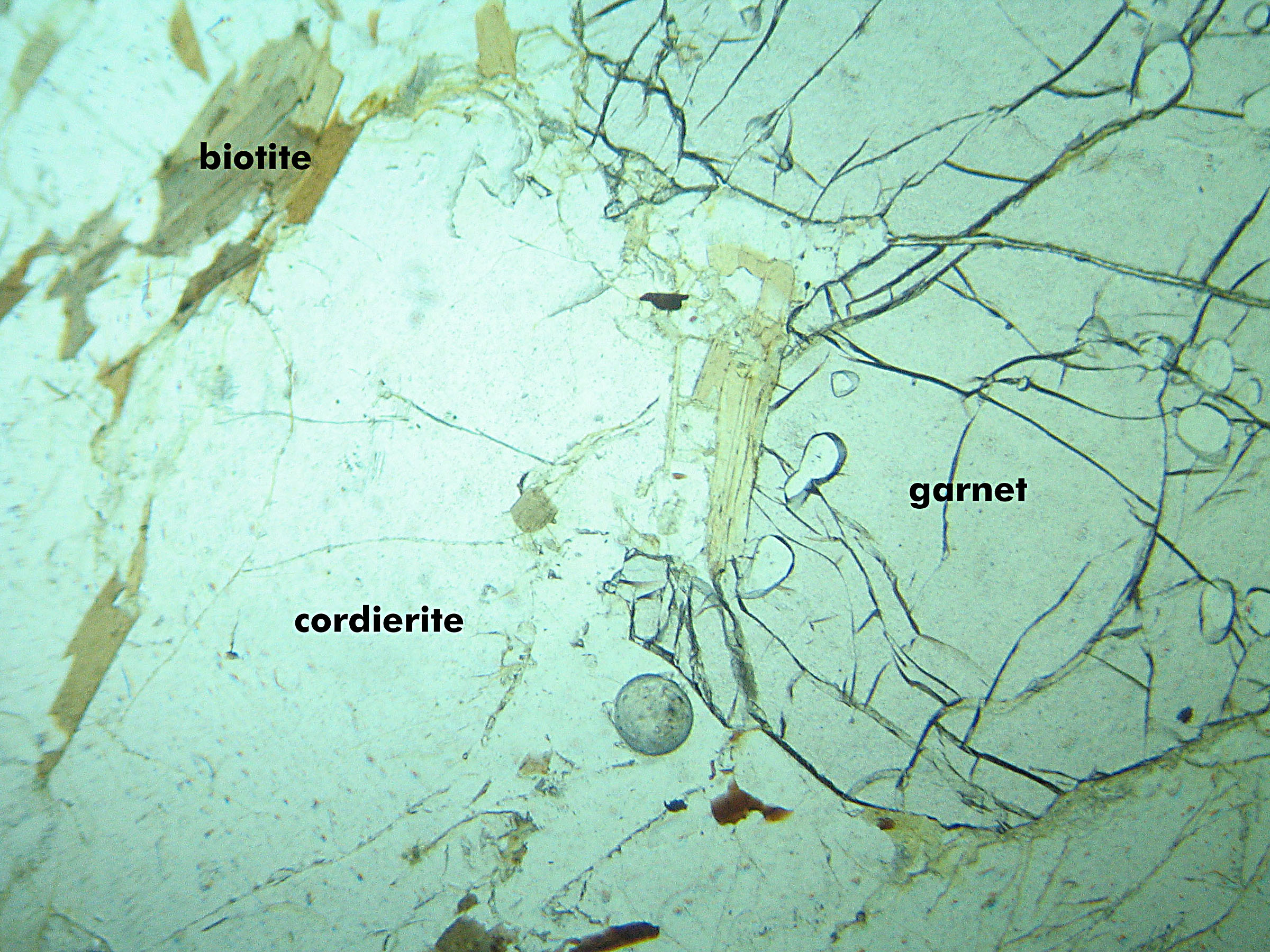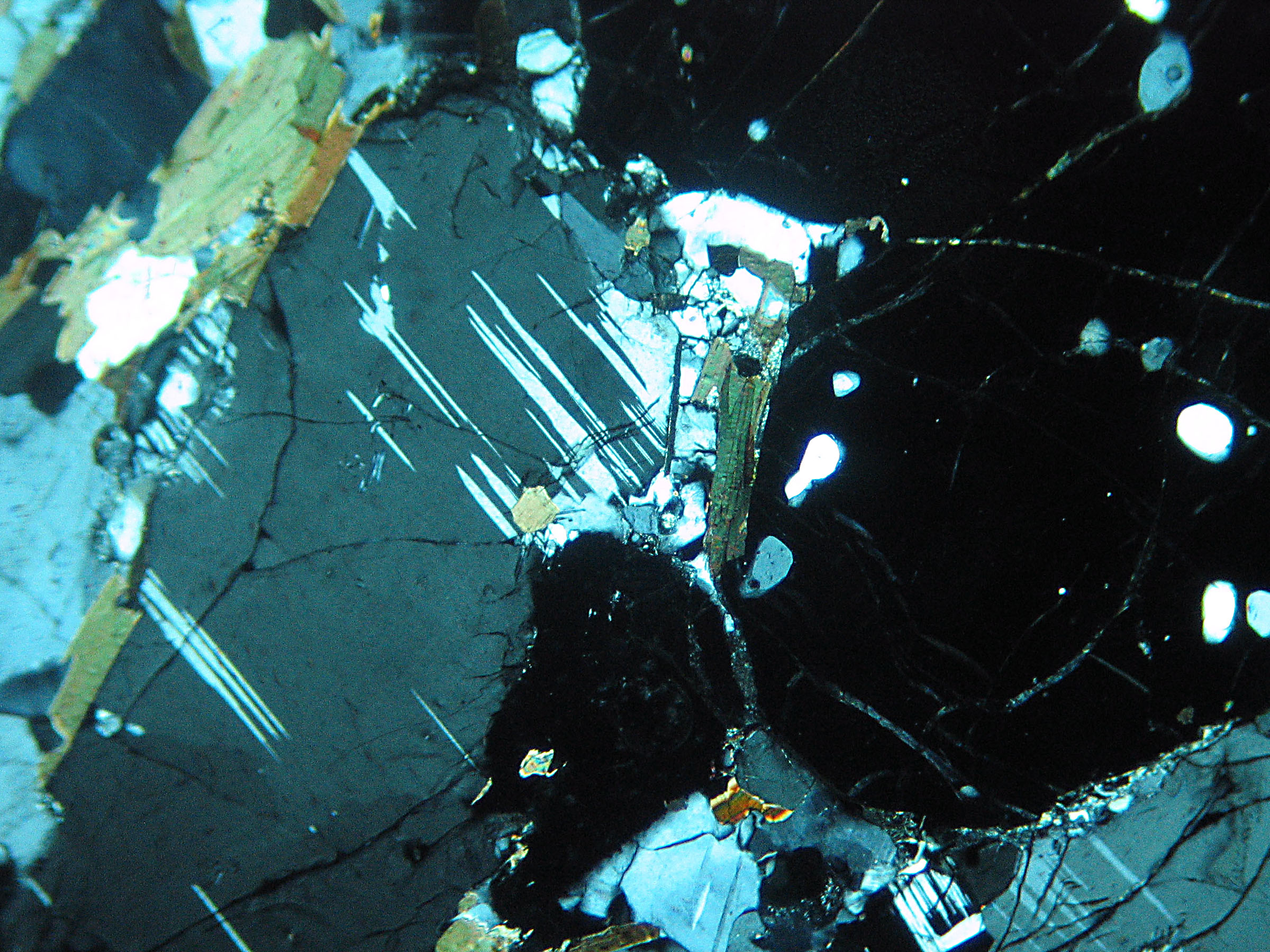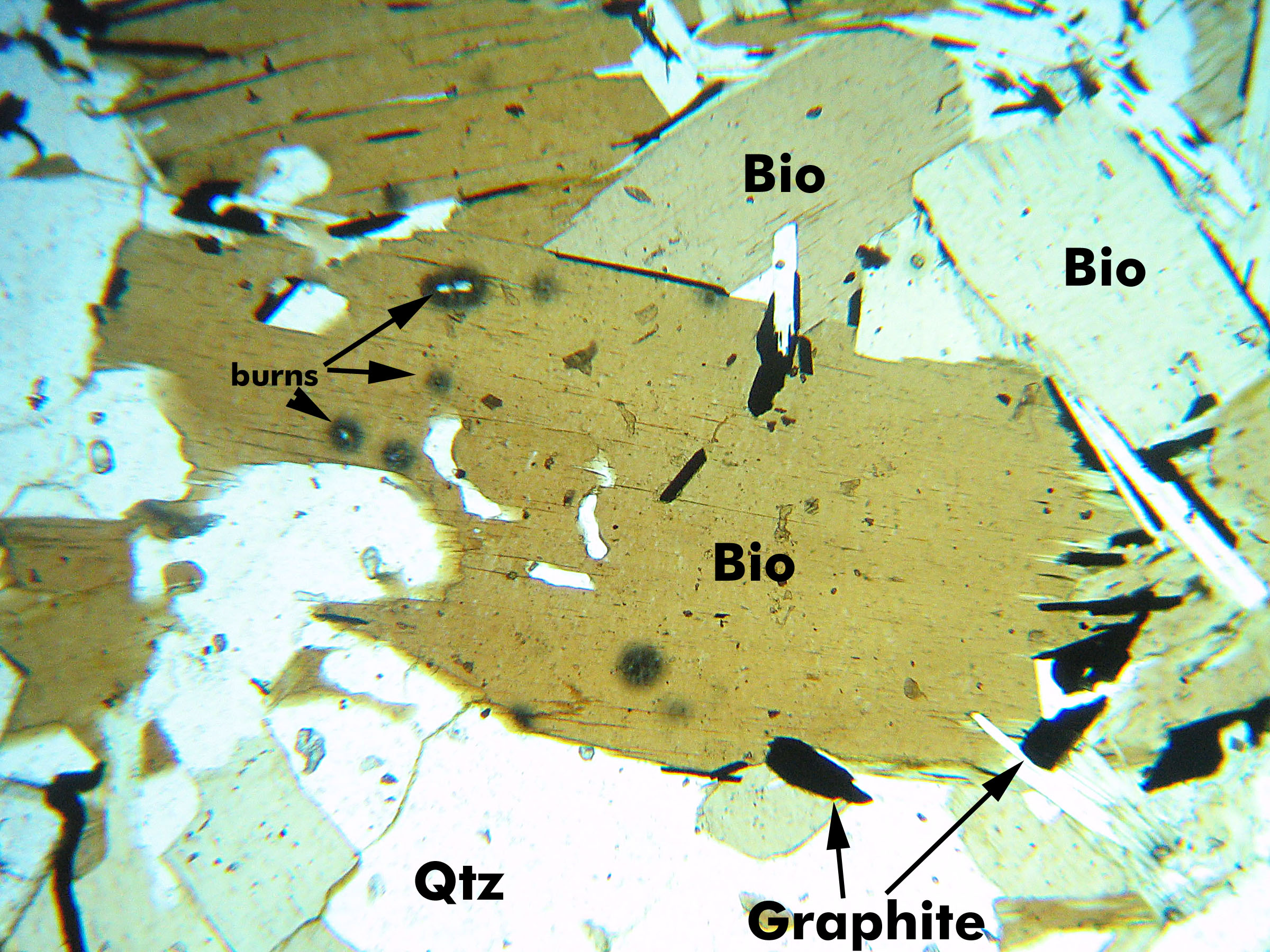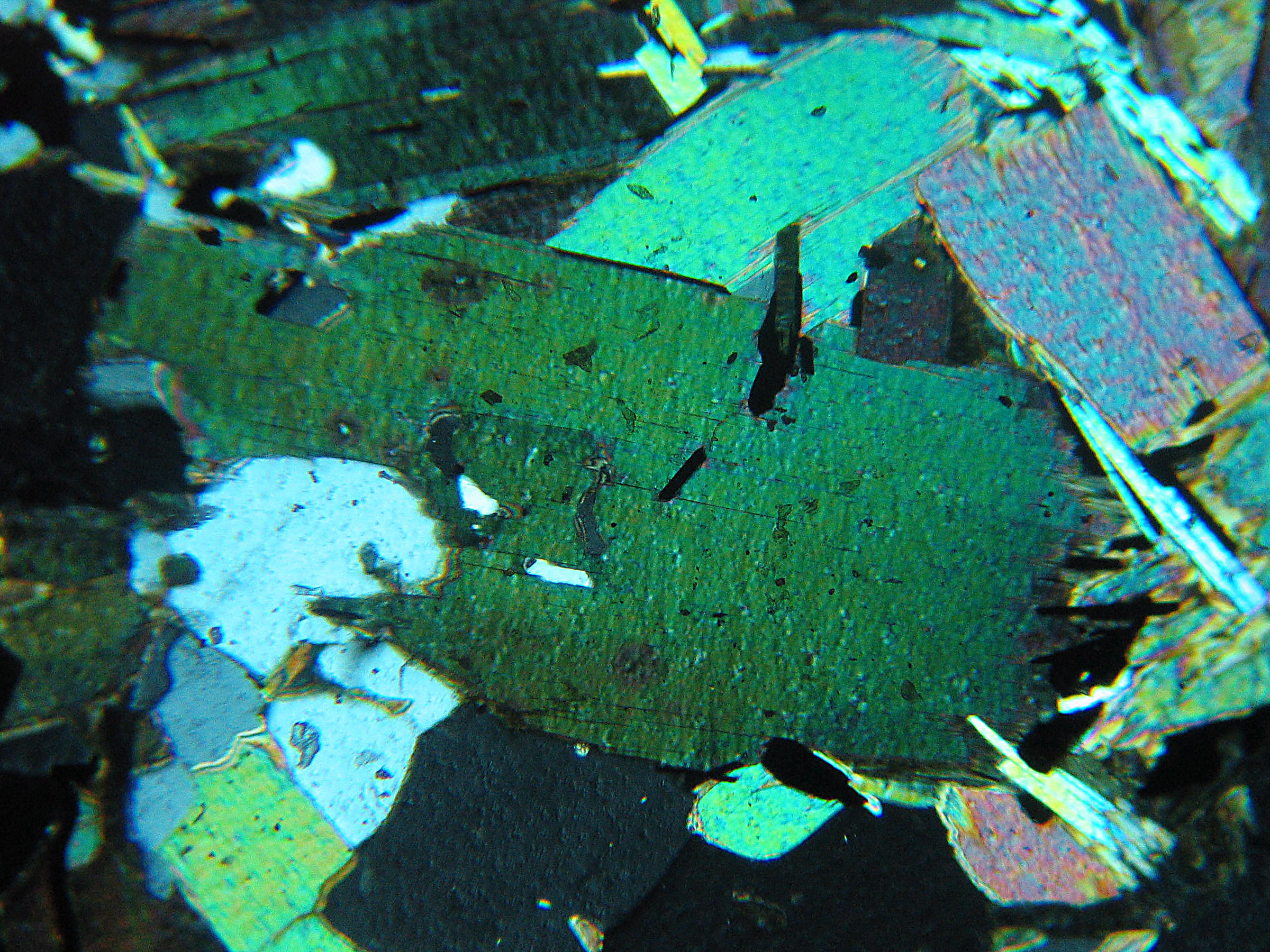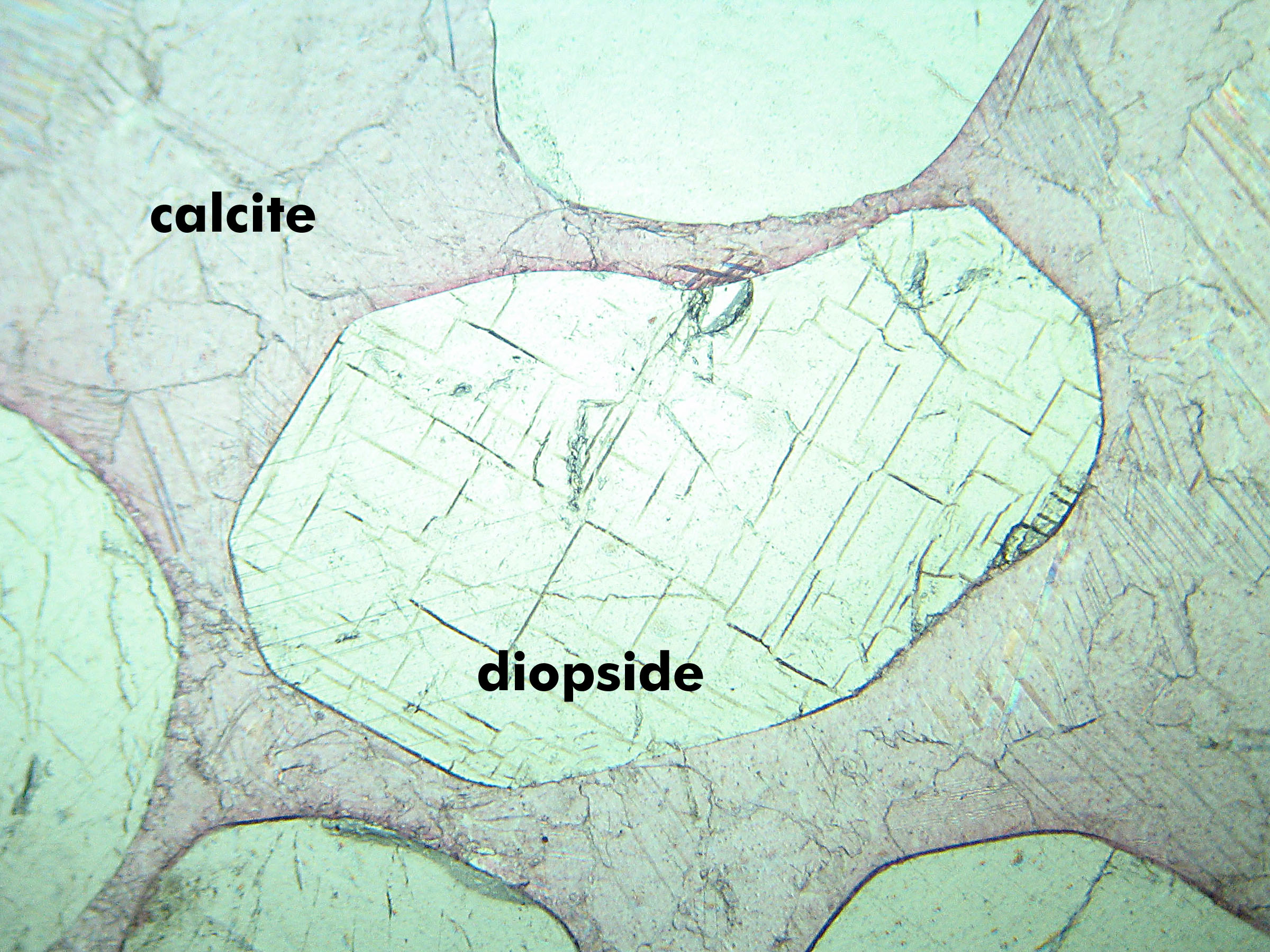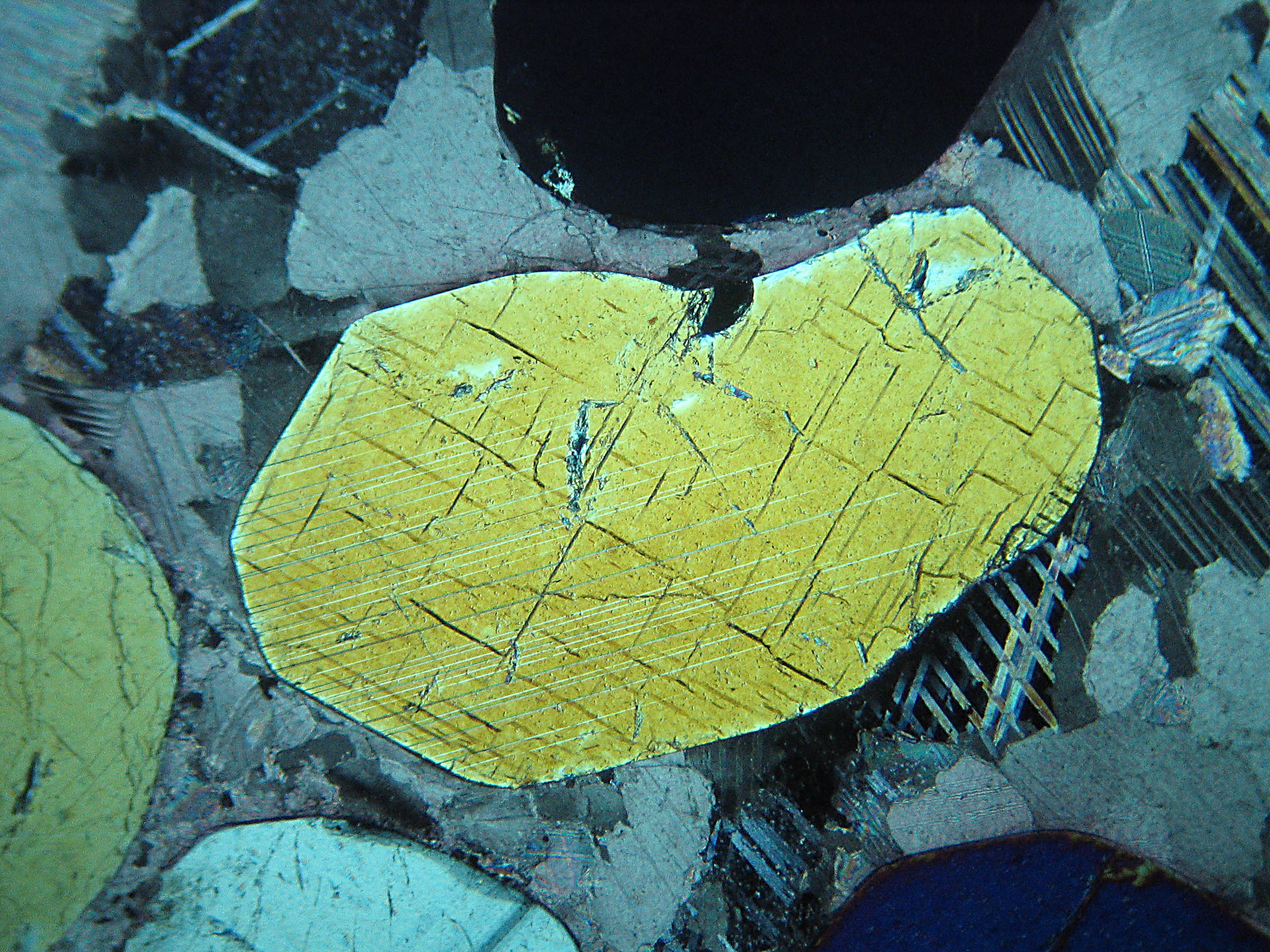Opaque Minerals, Isotropic Minerals, Anisotropic Minerals, Birefringence and Interference Colors
Opaque minerals do not transmit light in thin sections. So, they appear black in both PP and XP light at all times. Common opaque minerals are graphite, oxides such as magnetite or ilmenite, and sulfides such as pyrite.
Isotropic minerals are minerals that have the same properties in all directions. This means light passes through them in the same way, with the same velocity, no matter what direction the light is travelling. There are few common isotropic minerals; the most likely ones to see in thin section are garnet and spinel.
Anisotropic minerals have different properties indifferent directions. So, light travels through them in different ways and with different velocities, depending on the direction of travel through a grain.
Isotropic and anisotropic minerals are, most of the time, easily distinguished because isotropic minerals do not transmit light (are always black) when viewed under XP light. A complication arises because anisotropic minerals will appear isotropic if grains are oriented in a specific way -- if they are oriented so they are viewed "down an optic axis." Additionally, as the microscope stage is rotated, anisotropic minerals in any orientation go "extinct" (turn black) every 90o. The odds of a grain lying in just the "wrong" orientation so as to cause confusion are small, but to overcome this, you should always look at a number of different grains of the same mineral, and rotate the stage for each, to determining if it is isotropic or anisotropic.
Interference colors and birefringence: Anisotropic minerals, unless viewed down an optic axis, cause polarized light to be split into two rays as it travels through a grain. The rays may not travel at the same velocity or follow the exact same path. A value, termed birefringence, describes the difference in velocity of the two rays. When the rays emerge from the grain, they combine to produce interference colors. Interference colors are only seen in XP light! Note that the colors may be any hue in the specturm. As birefringence increases, the colors repeat (see figure below), but get more and more pastel (washed out). To describe interference colors we must specify both a hue and an order (e.g., 2nd order red; see chart below). Minerals with low birefringence show only white, gray and black interference colors. Minerals with very high birefringence -- such as calcite -- show such weak colors that they may appear "pearl" white.
The colors shown below may not match exactly what is seen through a microscope.
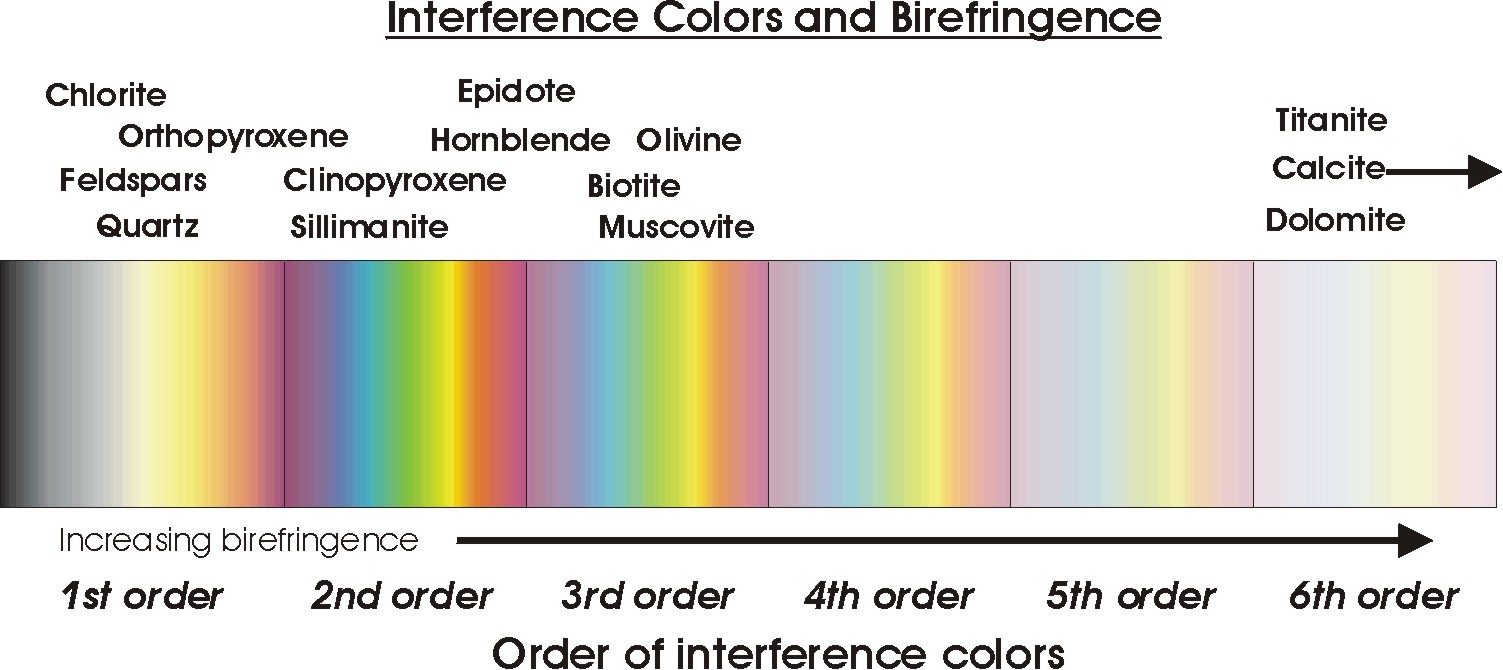
Using interference colors to identify a mineral: Birefringence and interference colors vary for a given mineral depending on the direction the light follows through a grain. They also change as the microscope stage is rotated. If you are looking down an optic axis, the mineral appears to have no birefringence. So, you should look at a number of grains to determine a mineral's maximum birefringence. The "maximum" (highest order) interference colors are diagnostic for a given mineral. In the chart above, the colors under the mineral names are typical interfence colors for the given mineral. However, interference colors depend on many things (including grain orientation, thin section thickness, and variations in mineral composition) and so the colors indicated shown can only be considered general guides. In general, the exact color is not as important as the "order." With a ltitle bit of practice, determining the order of interference colors, at least for 1st, 2nd and 3rd order, is not too difficult.
Anomalous interference colors: Some minerals show interference colors that are anomalous. This means the colors do not show on charts such as the one above. Typically, these minerals have very low birefringence. Sometimes, however, anomalous colors are caused by other things.
